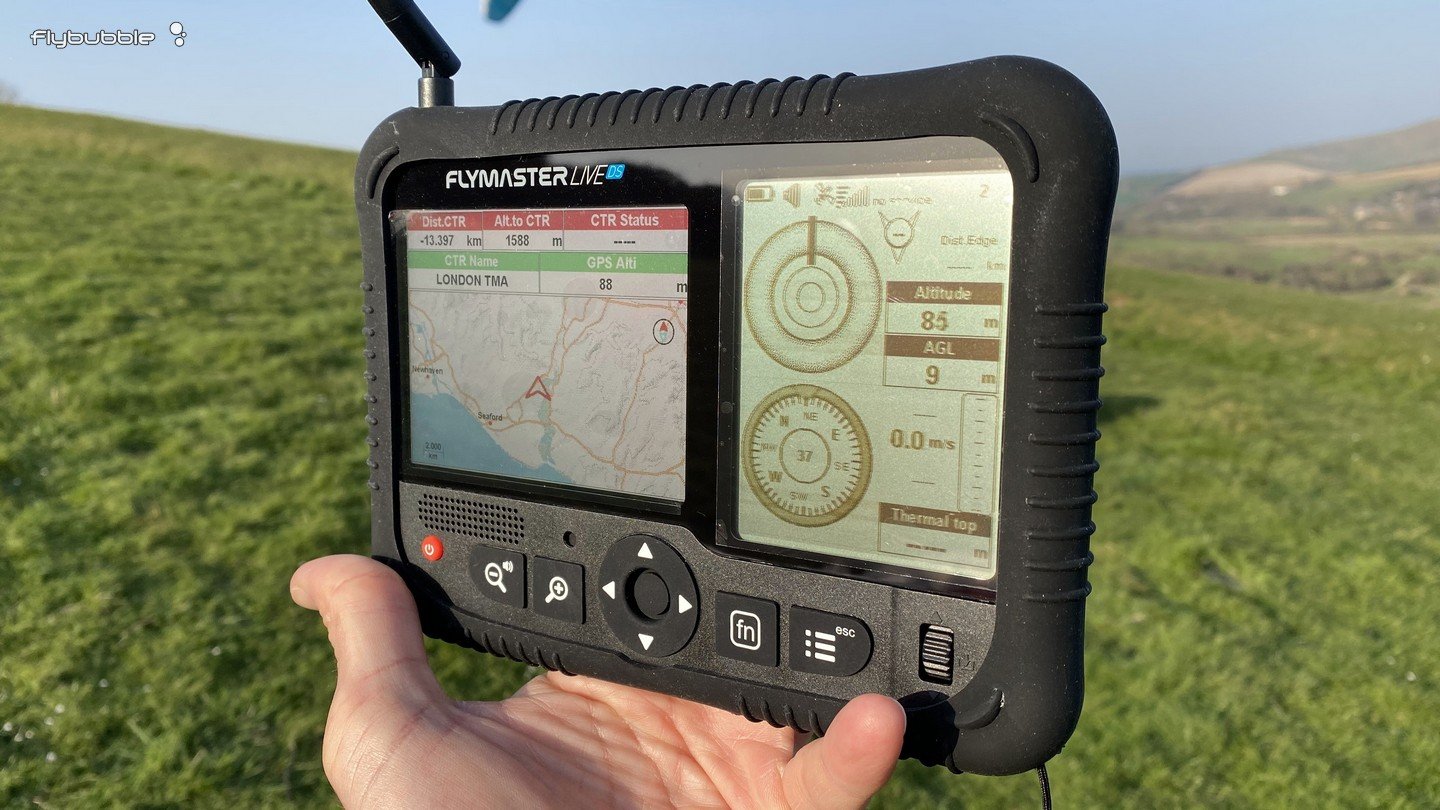
Flymaster’s long-anticipated double-screen Live DS has finally arrived in eager pilots’ hands. Flybubble’s Phil Clark has put one on his flight deck, and gives us his first impressions of this high-spec new instrument.
Here we are then! Eight years after the Live SD (read our review), and some three years after Flymaster originally teased the prospect out onto the internet, I finally have the Live DS in my hands.
This new device has the all-in-one functionality we've come to expect from alti-vario-gps devices, telling you where you are, how fast your position is changing and in which direction. The Live DS combines the features of Flymaster’s competition-focused Nav SD and the XC-focused GPS SD+ into one device, and adds a second – colour – screen, intended primarily for maps and navigation.
Flymaster’s tracker system was developed and used for the X-Alps, and the original Live units are supplied to PWC pilots to enable the live broadcast of their positions during tasks. They help to eliminate task setting errors and make it easier to report weather and safety conditions on course.
I've been using Flymaster's Live since it first became available, and was curious to see what was new in this latest edition.
So what's in the box?
The version I was sent came with a charger (with UK power socket adaptor), a USB cable, a firm shell case and the unit itself. Micro SD and SIM cards were included, as well as a card reader and a quick start-up guide. It was well packed and had a substantial film tacked over the screen. When powered up, the unit said its battery was at 97% charge, good enough for more than seven hours of flight; later this time improved to over 24 hours.
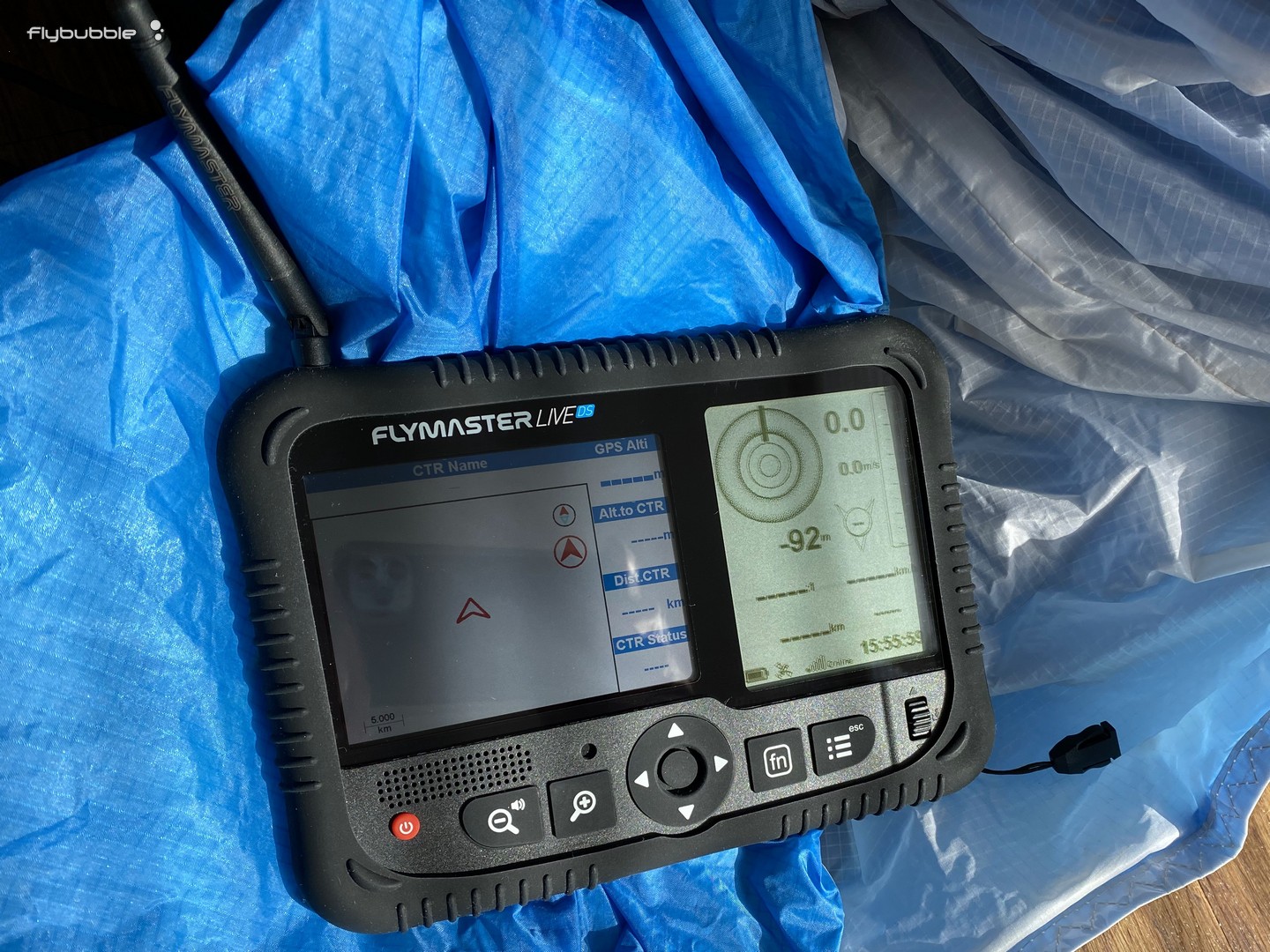
Page layouts & Designer software
The Live DS shipped with six page designs preloaded into it. A big feature of Flymaster instruments is the ability to completely customise the way the screen is laid out and how the unit deals with airspace warnings, hitting turnpoints and discovering thermals. The key to getting the most out of them is getting used to the Designer software application and sorting out exactly what you want. You can design and store in the unit up to eight different pages with any combination of fixed or variable data fields and a variety of elements for the vario, compass and other gauges.
Therein lies the first of the hurdles: trying to figure out what you need and want, and how to get that into a neat and tidy display. The default layout that the unit comes with is available for download from the web. It's useful to have this as a back-up on your PC, just in case you make a mess of editing your own layout.
I think my experience getting my old Live SD how I like it has helped me develop my own layouts quite quickly, but, even so, the new software for PC is not as precise or easy to use as the version used with the SD instruments. When you set units 'below' that doesn’t happen and when you change font colours it’s hard to see what you select. I don't know if the Mac version is any better.
The screenshot below highlights how hard it is to select text colour on PC version of software. There's just the suggestion of colour at the bottom of the pop up Data Settings dialogue box. Apparently there's some way to change the app's display compatibility settings for Windows but I haven't found it (I'm not that techy).
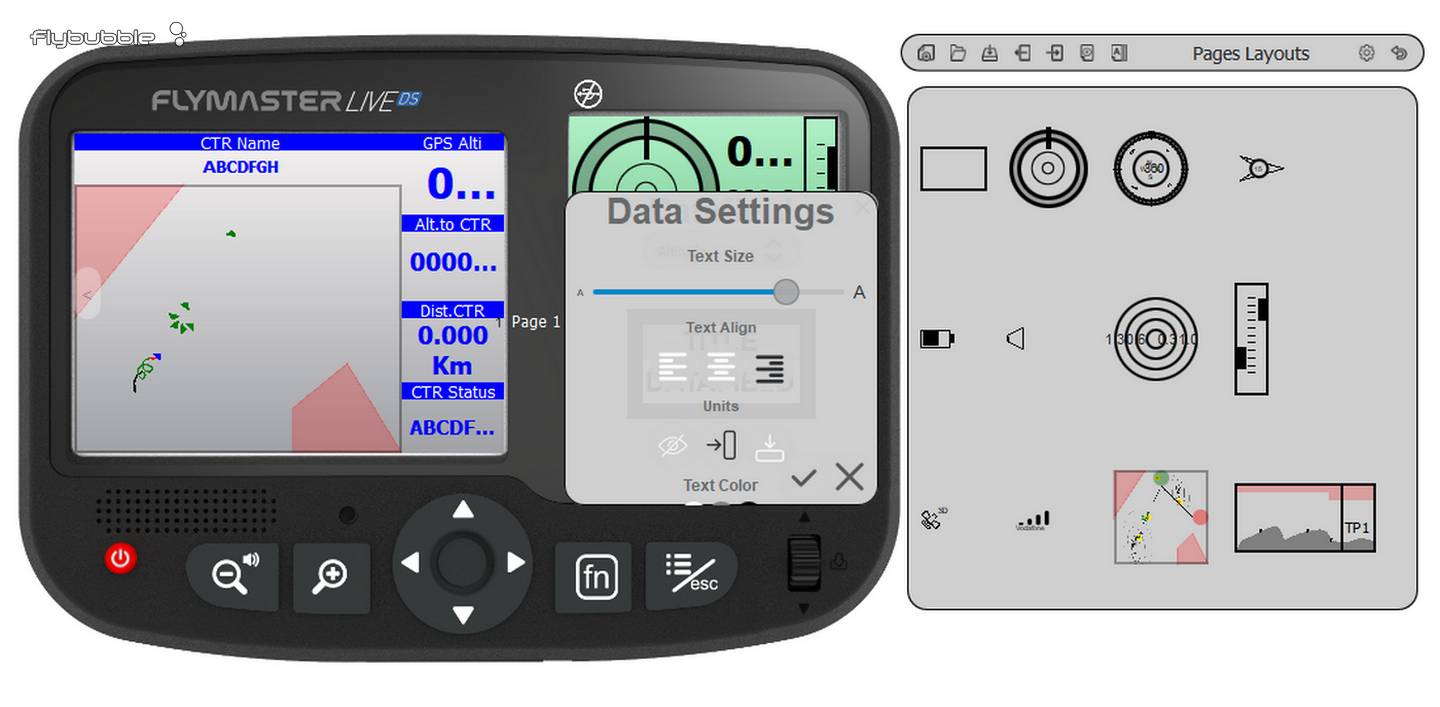
The biggest tip I would give anyone buying one of these is to take your laptop to the hill for the first couple of times you go flying. That way you can fly, check your layout, land, edit, and test again on the same day. I had to develop my first layouts by coming home to the PC and waiting two to three weeks before I could get out again, only to find out it still wasn't quite right.
Frustratingly the F5 key doesn't quickly update the layout, and each time you make a small change and update the unit it goes back to page 1. The F5 update key was useful because the text and fonts do look a little different on the PC screen when compared to the unit itself, and sometimes just being able to make a little nudge and check is a quicker process in refining.
This is where XCSoar devices, Oudies and the like score an advantage, by being easier to set up on the hoof. That said, if you set a layout with the six user-defined fields on the screen, you can change them without connecting to a PC so any one of nearly 80 different parameters can be displayed in these six boxes.
Work in progress?
My only other gripe, that things were almost there but not quite ready for the day of release, is still there to some extent – things like having to source a new case in order to keep the unit in its protective bumper. Given the number of firmware updates already put out, I’m still slightly unsure if I was buying a finished product or becoming a beta tester.
That said, the first year of live tracking is free, as was the protective bumper, so that's some compensation (introductory offer).
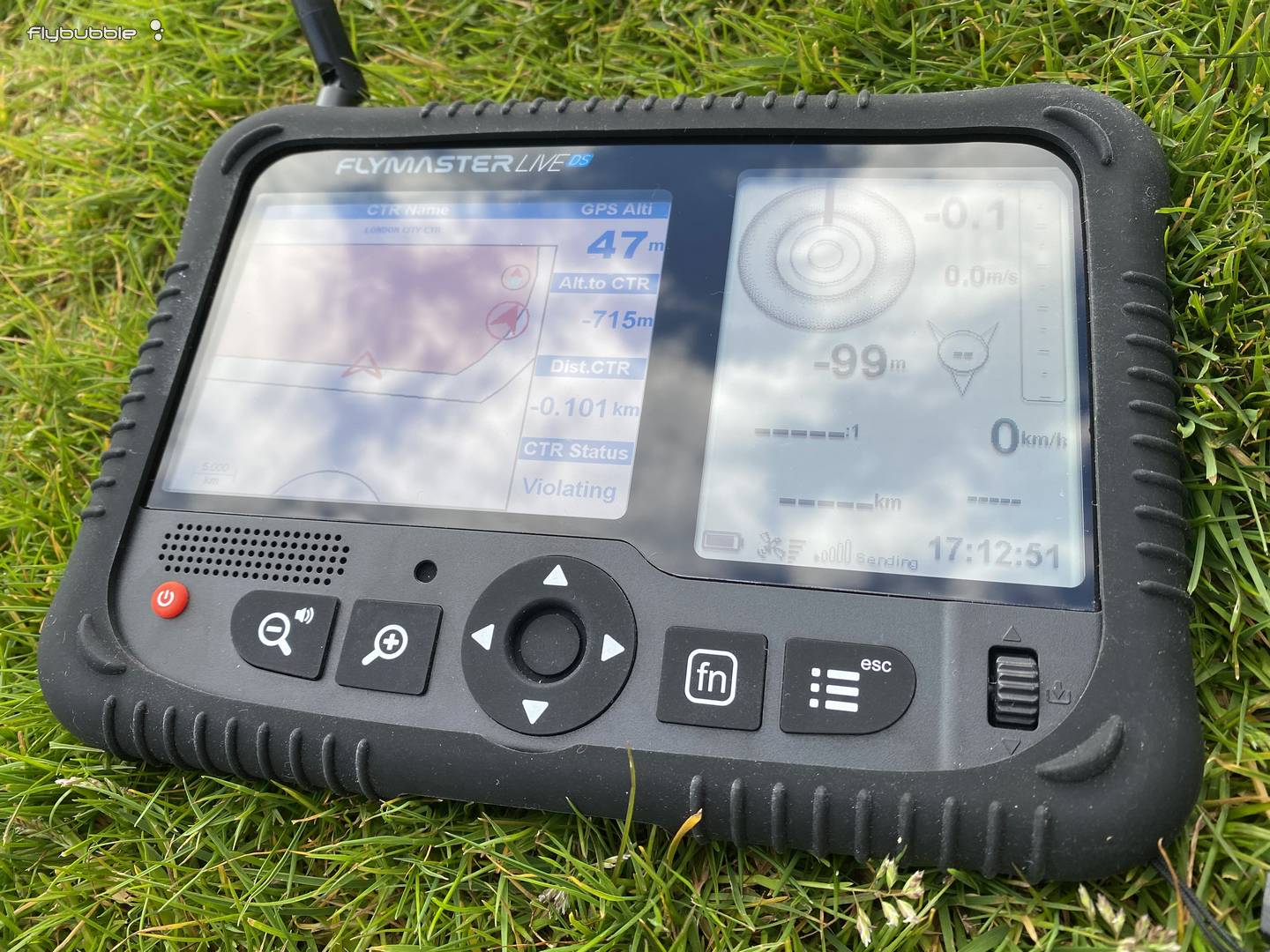
Dedicated all-in-one device
A big advantage for a dedicated device like the Live DS is that it's all in one piece with no extra battery packs, loose leads, extra lumps or soldered bits. I've seen some home-built solutions that look very professionally put together but still seem fragile and don't hold up when it comes to the crunch, both in general use and when accidentally abused. For the last 18 months or so I've been using a mixture of iPhone and Android phablet devices in conjunction with my Live SD, and now having just one reliable piece of kit on the flight deck is something of a relief.
Twenty plus hours of battery life on a full charge is pretty good too, and while the unit is best charged by mains power, the long life means there's no real need to charge if you're away for a weekend. That's another score over the phone solutions that need daily, or even in-flight, charging.
The case has a plug/socket cover to prevent dust and dirt getting into the SD and charge sockets, but it’s not possible to swap the SIM card, and you’ll need to subscribe to Flymaster to sort out continued use of the live tracking. The only thing attached to the Live DS is a lanyard with a clip, secured at the bottom corner of the case. You can use this to lash the device to your harness or flight deck, but it will need some velcro hooks (supplied) stuck on the back of the case (even if it is slipped into the rubber bumper case) before flight. I don't know how you'd attach it to a hang glider – maybe some dedicated panel on the base bar?
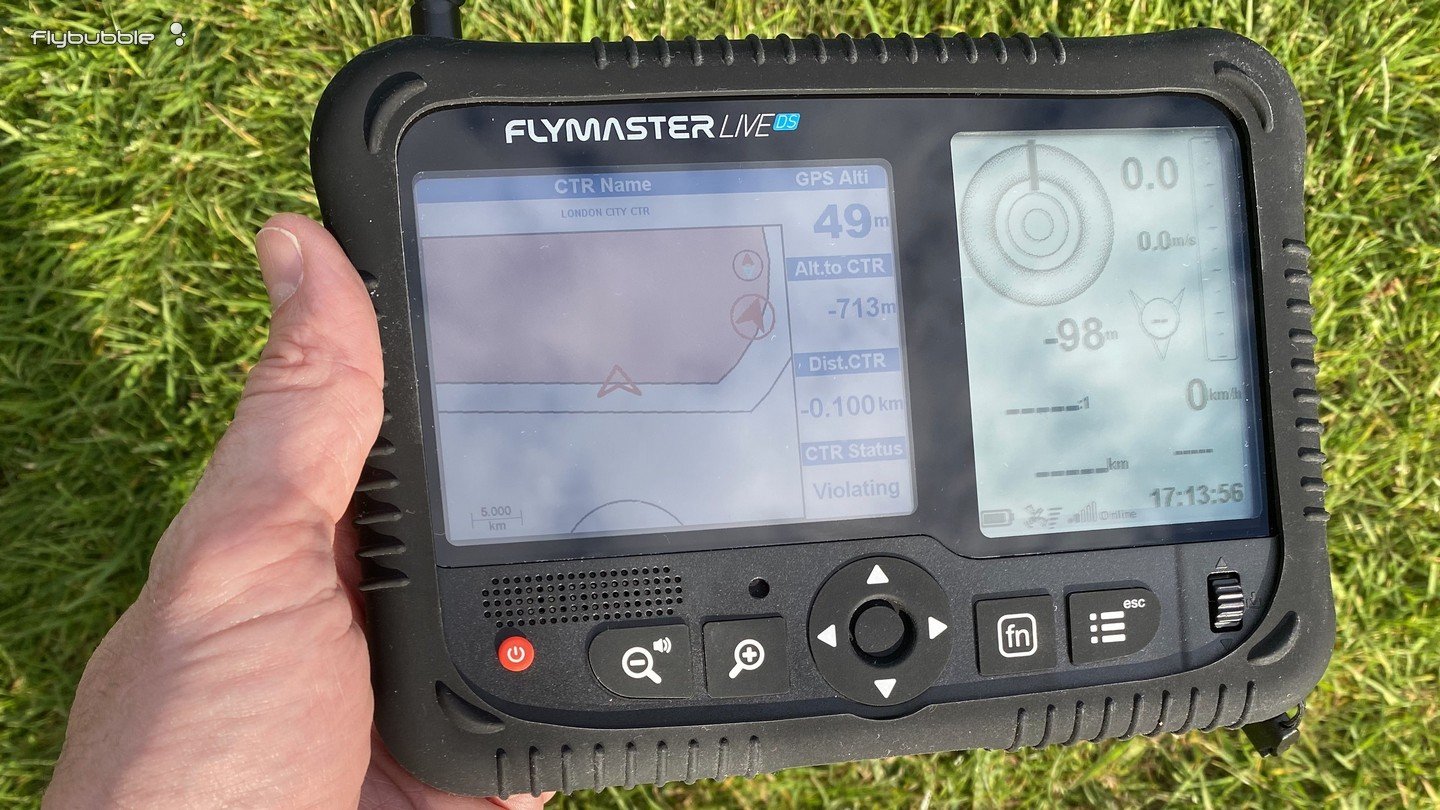
Flarm?
The Live DS includes 'Flarm Beacon' in the price, with no additional payment required. Flarm Beacon means Flarm transmit (TX) only. This means it can be seen by other aircraft equipped with a Flarm receiver or via the OGN.
For a fee, the Live DS also offers the possibility to upgrade the Flarm service to both transmit (TX) its position and receive (RX) the position of other pilots (RX+TX). Flymaster say they charge the same as Flarm does for this upgrade (50 euros at the time of writing).
Summary
All the things I loved about the Live SD are still there, and the new colour screen is very easy to see when you're outside. There’s no aperture in the case, and the screen itself isn't quite as recessed as the previous models, so that helps too. I hope the new screen is going to be tough enough; I don't know if it's adequately protected by the rubbery bumper case. My old Live SD was part exchanged before this unit arrived, so I can’t directly compare.
As the adage goes, you get what you pay for, and so the minor quibbles were frustrating, but once the quibbles are resolved (and they were within a day or two) it becomes an amazing bit of kit that does all I need and more than I'll ever want.
The Live SD would have scored 6 out of 10 on release, rising to an 8 out of 10 once I'd figured it out. The new Live DS gets a solid 8. I found the shipped layouts useless and it's still, after three years, not quite ready, but it's hit the market in a much better state than the original Live did. On balance I'm glad I made the switch.
These are my thoughts about the Flymaster Live DS based on first impressions, four hours airtime from hills and winch, and more hours learning.
See the good stuff and the less good stuff below.

The good stuff
- The display is very good in the sun.
- Even the small fonts are easy and clear to read.
- The display doesn't seem to be laggy (I need more time with this to be sure).
- All the maps and data are loaded, you can add extra items if you need to.
- The scroll wheel is really good for entering data (or things like FlarmID pass codes). It would have been a nightmare going through with this step with the old four buttons system.
- Making waypoints is much easier; not as good as a smartphone or the Volirium with its touchscreen, but still, it's a LOT less faff to make an out-and-return task on the day, on the hill, than it was with the Live SD.
- It combines a regular instrument, phablet and Bluetooth vario into one device.
- Huge battery – something like 24 hours on a full charge.
- The menu, layouts, and vario response feel familiar.
- The buttons are good, so it'll be difficult to accidentally trigger something
- Includes Flarm Beacon (TX) in the price.
- Option to upgrade to the Flarm service to RX+TX for 50 Euros (at the time of writing).
- Free bumper case and live tracking for a year is a nice touch (introductory offer).
The less good stuff
- We've already had four updates to the firmware – is it a truly reliable bit of kit yet?
- You have to connect it to a computer to change things or get info in and out of it (that sucks when you just want to make one small tweak to your layout).
- It's not very loud (my XC Tracer II is louder on volume 2). It'll do but I wish it was louder. The voice isn't much help.
- The instrument manager software isn't great. It's fiddly to use. The old version had much more precise control over elements and layouts (on a Windows PC).
- The pre-installed layouts aren't that great (page 5 had no visual vario element!).
- Having the unit in the bumper case stops you using the hard shell case.
- I can’t use my own sim card, so I’ll have to subscribe to the Flymaster service next year ¹.
- Is the airspace 'really' up to date? What about local arrangements and such? Gonna have the phablet with me for a while yet.
- No triangle assistant (yet).
¹ I don't care about the 'live' bit as the Flarm will appear on the OGN servers; it's more the 'punting flights across to XContest' (a popular international XC league website) convenience without having to mess about with computers and cables, especially if you're away for a week.
Find out more about the Flymaster LIVE DS
